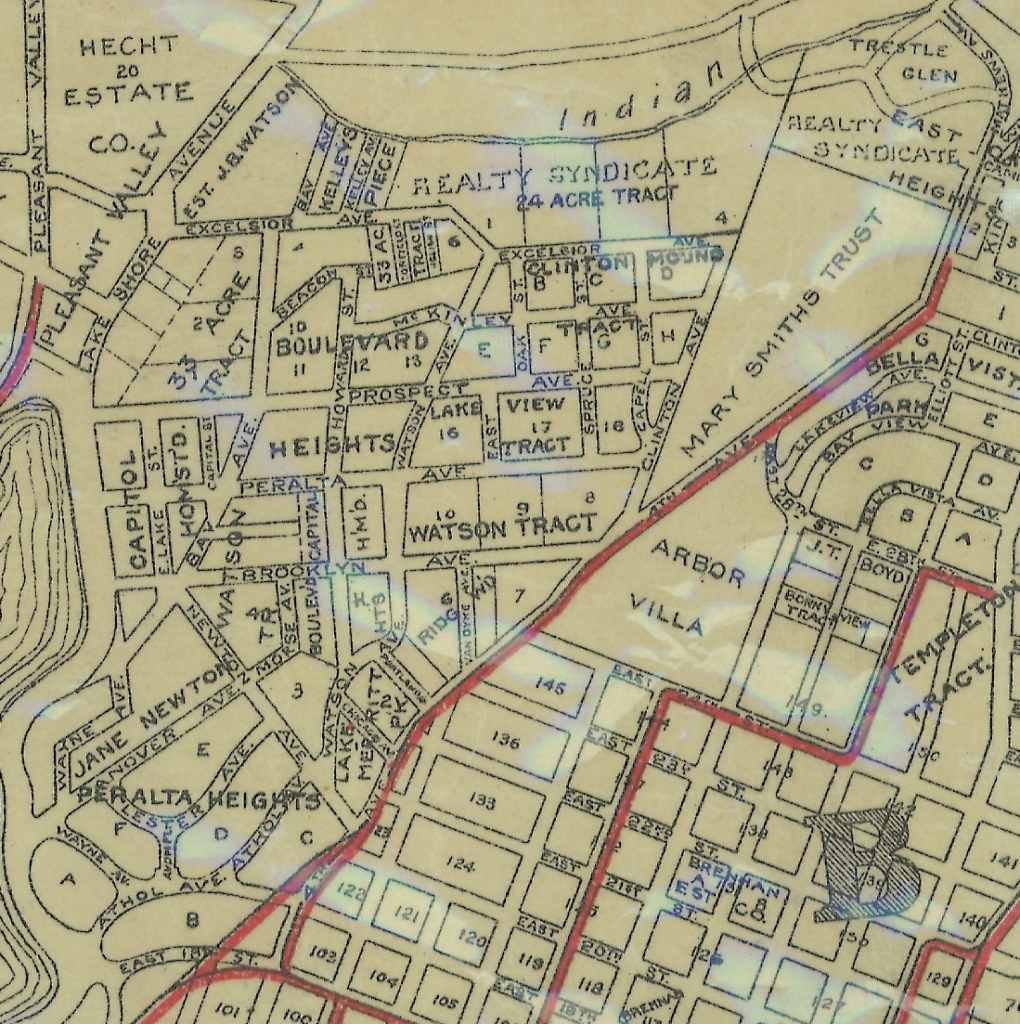
Great weather and turnout for Saturday’s walk exploring Cleveland Heights and the former estate of F.M. “Borax” Smith. Plus we saw a hawk flying over a couple of times! Special thanks to Meryl and Grey from our parent organization, WOBO, for helping with the walk logistics.
There were a number of groups represented and various resources for other walks and research mentioned:
- Walk Oakland Bike Oakland – Slow Oakland campaign
- Berkeley Path Wanderers
- East Bay Yesterday podcast – “Unfair Housing” episode
- Oakland Underfoot – sidewalk stamps
- Oakland History Room
- Oakland Heritage Alliance
- City of Oakland walking tours
We covered a lot of topics in our 2.5-3.0 hour walk. Here are links to the Oakland Wiki pages on some of the things we saw:
- Cleveland Cascade
- Oakland Gnomes
- 552 Montclair Ave. (Robinson House)
- Edward C. Robinson
- Bestor Robinson
- Louis R. Wicker
- Key System
- Peter Lee – mural artist
- Ivy Hill Studios
- Borax Smith
- Mary R. Smith
- Borax Smith’s Red House
- Evelyn Ellis Smith
- Arbor Villa
- Arbor Villa Palm Trees
- Mary R. Smith Home for Friendless Girls
- Cielito Lindo
- St. Vartan Armenian Church
- Haddon Hill
- Haddon Hill Stairs
- Henry J. Kaiser
- Kaiser House
- William Edward Schirmer
A number of people asked about researching the history of older buildings, especially homes. Someone asked specifically about the house behind us as we viewed 552 Montclair Ave. (the Robinson House). I didn’t know anything about it, but it is an interesting looking house.
One of the challenges of researching history is that what we consider landmarks (streets, addresses, neighborhood names, etc.) change over time. Below is part of a 1905 map; “Arbor Villa” and “Mary Smiths Trust” (i.e., the Home for Friendless Girls) are clearly visible on the map. But if you look more closely, you’ll notice there’s no Cleveland Street (it’s Prospect Avenue), no Park Blvd. (it’s 4th Avenue), and no Montclair Avenue (it’s East Oak St.) And there’s a vague “Boulevard Heights” labeling what is now known as Haddon Hill.

If that wasn’t enough, the addresses have changed, too. 552 Montclair was 252 East Oak St. And really old locations might not have had an address number. But none of this is unique to the area–street names and addresses have changed all over Oakland, and more than once. A big part of this is because Oakland grew in stages. It started small (previously the village of Contra Costa) near the foot of Broadway, and grew, and then annexed other nearby towns like Brooklyn and Elmhurst. It didn’t grow to it’s current bounds until 1909. Annexing those other towns mean absorbing their existing streets and street names, and sometimes those conflicted with the street names in Oakland.
All confusing stuff if you’re trying to find the history of a particular building (and that’s not even getting into the possibility the building has been physically moved to a new location.) Putting all those thing together is a big part of why the Oakland History Room is the best place to start when doing this kind of research.
